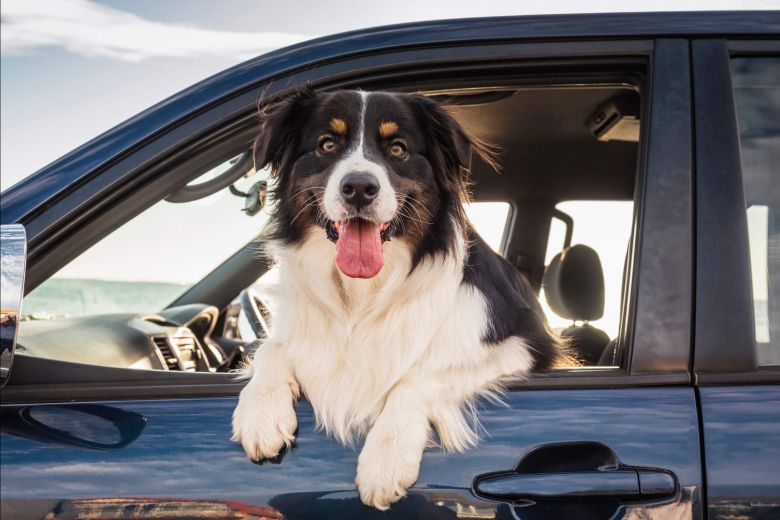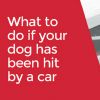Whether it’s for a trip to the vet or a visit to the beach, most owners will take their dog in the car at some stage. It almost goes without saying, however, that cars can be dangerous for dogs if care and common sense are not applied.
Remember also that the Highway Code states motorists need to ensure dogs are “suitably restrained” while travelling in the car.
Here are some rules and suggestions for driving with your dog, whether they are in the front seat or the car boot.
What to do if travelling with a dog?
Restrain your dog
Use a good quality harness, or a crate or guard, to keep your dog safe. There are many on the market so do your research first or seek advice from your vet.
Always carry water
Cars can get hot even when they’re moving, and dogs may become dehydrated on long trips. You can buy travel water bowls to ensure a drink is always on-hand.
Make regular stops on long rides
If you intend to be in the car for a long time, be sure to plan your journey so you can make plenty stops. Your dog will appreciate being able to stretch their legs, enjoy a drink and some fresh air and go to the toilet.
Use window shades
While these are designed for babies and young children, your dog may also benefit as they help keep cars cool and block out direct sunlight.
Try to help your dog relax
There’s nothing worse than travelling with an anxious pooch. Do whatever it takes to ensure your dog is happy, content and comfortable sitting in your car. This might be as simple as giving them their favourite toy.
Drive to fun places
If your dog only ever goes in the car to visit the vet, he may associate it with distress rather than entertainment. Be sure to travel to places he loves visiting, too.
Be mindful of motion sickness
Most dogs will outgrow this condition, but if you’re concerned about it, go to your vet as they may be able to prescribe medication. It’s also worth bearing in mind dogs tend to suffer less if they’re facing forward while you’re driving.

RAC sale – up to 33% off*
• Roadside cover from £5.29 a month†
• We get to most breakdowns in 60 mins or less
• Our patrols fix 4/5 breakdowns on the spot

What not to do when traveling with a dog in the car?
Let your dog hang out the window
While this may look cute, it’s highly dangerous. Our vets have witnessed dogs suffer horrific injuries after hitting a passing vehicle while hanging out of a car.
Forget to switch off airbags
If your dog is secured in a harness in the front seat, be sure to move the seat as far back as possible and switch off the passenger-side airbag as it may do more harm than good if you have an accident.
Open windows entirely
It’s imperative to keep your dog cool on car journeys, and this can be achieved by opening windows a little to allow a cool breeze to circulate. But never open them entirely as your dog may try to jump out.
Take your dog anywhere without an ID tag or microchip
By law, dogs who go outside must have a microchip implanted by the time they’re eight weeks old and wear a collar with their owner’s name and address.
Feed your dog just before you travel
This can upset your dog’s tummy and bring on motion sickness, which is the last thing you’ll want on a long journey.
Leave your dog alone in a car
This is particularly dangerous on warm days. Dogs can overheat within a matter of minutes, and heat stroke is a common cause of admissions to Vets Now pet emergency clinics and hospitals in the summer.
Forget to take a food supply
It’s worth taking some of your dog’s usual food on any long car journey, just in case you break down or get stuck in heavy traffic.
What does the law say about having your dog in the car?
The laws for driving with a dog in the car have changed over time, as tech and designs of vehicles have changed.
Rule 57 of the Highway Code states that dogs (or any other animal) should be suitably restrained while in a vehicle so they can't distract the driver or cause injury to themselves or others in the event of an accident. This can lead to a fine up to £5,000 and even an appearance in court.
However, the code also advises against allowing dogs to travel in the front passenger seat, especially if the car has a passenger airbag.
Although there is no specific law stating that dogs must wear seat belts or harnesses while in a vehicle, it is advised to use a proper harness or dog seat belt attachment to secure your animal and prevent it from moving around the car.
This is because if your dog is loose and moving around in the car, you could potentially be charged with ‘careless driving’.
Finally, make sure you check your car insurance policy to see if it includes any information relating to driving with pets in the vehicle.
It is important to always check what the latest announcement are from the Government on this topic.
Do you frequently drive with your dog in the car? What advice would you give to other drivers looking to take their pet on a road trip? Leave your comments below.








